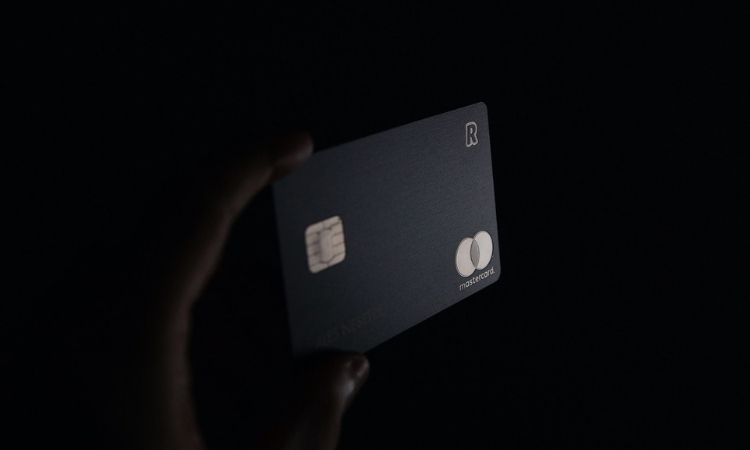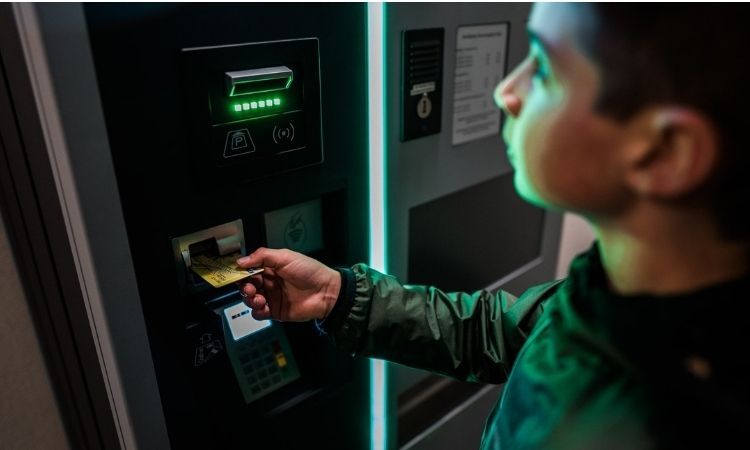Many people love the convenience of checking their bank account balances through an app or website. However, it’s a heart-sinking feeling to do that and see a strange charge. Unfortunately, these situations happen more than people may think due to a rise in card skimming.
This happens when criminals use a special device to steal credit or debit card details during a normal transaction. It’s vital to learn more about card skimming and how to protect yourself from it.
How Does a Credit Card Skimmer Work?
A credit card skimmer fits onto or inside of an ATM or card reader. It records a person’s credit or debit details via the magnetic strip on the back of every card. Some criminals also install tech to capture a person’s PIN, such as by placing a fake keyboard over the real one or mounting a tiny camera on the ATM.
However, a criminal can take funds from someone’s account without having a PIN. They do that by committing Card-Not-Present (CNP) fraud. It involves any unauthorized transaction someone makes without physically possessing the payment method. Such purchases often happen online and only require the card number.
An emerging type of card skimming works like digital pickpocketing. It affects people with cards that have contactless payment capabilities. In such cases, a criminal uses a Radio Frequency IDentification (RFID) scanner to walk near enough to get a card’s details while it stays in the owner’s wallet.
Card skimming happens online too. Cybercriminals insert malicious code on a website, which serves the same purpose as physical readers. Entering the details into a compromised form is enough to send the information to an unauthorized party.
One cybersecurity firm recorded a 26 percent increase in that crime during March 2020 compared to the previous month. As more people stayed inside due to lockdowns, they didn’t visit ATMs as much. However, e-commerce activity rose significantly.
How Can You Check for a Card Skimmer?

Card skimming is an illegal and costly act. Statistics from the FBI estimate annual costs of $1 billion to consumers and financial institutions. Fortunately, you can do several things to stay safer from card skimming, starting with being more aware.
Start by looking at the card slot and seeing if it sticks out more than you’d expect. Many externally mounted skimmers slightly extend beyond the card slot’s length. You can also lightly grip the protruding part and try to wiggle it. Since criminals attach card skimmers for temporary use, you might notice it moves slightly in your hand.
Some card-skimming attempts happen at gas station pumps. However, the pump housing typically has a lockable door with a security sticker placed over the opening. Check it for signs of damage or tampering, including the word “void” on the label.
It’s also useful to compare the card slot on your pump with others at the station to see if you can spot any odd differences.
Pay attention to visual cues on the ATM or card reader too. For example, many have arrows, diagrams, or lights that show the insertion point. You may notice some misalignment between the slot and provided guidance, which could indicate a card skimmer installed.
Another option is to download a skimmer detector app and run it before using a card reader. Most work by detecting Bluetooth signals, which skimmers often use to transmit the stolen data to themselves.
It’s easy to find free versions of these apps. However, they’re not perfect, especially considering how many car headsets, smartphones, and other widely used consumer gadgets also have Bluetooth activated.
How Does Card Skimming Affect Banks?
Banks face daily risks of financial fraud, and these incidents may happen in conjunction with other crimes.
For example, the False Claims Act relates to people cheating the government by not delivering on their promises. Affected government agencies could recover up to three times the total damages sustained. Some false claim cases involve bank fraud.
In one case, a man made false statements to government agencies and subsequently received lucrative contracts to provide medical masks for them. In addition to that crime, the individual lied in an attempt to collect federally-backed bank loans given via a COVID-19 recovery program.
Many people think of card skimming primarily affecting bank customers. However, it hurts financial institutions as well. If someone’s card is misused and the event is traced to a certain bank, they may decide it doesn’t have sufficient security and switch providers.

Additionally, banks and ATM networks bear the costs of refunding customers for fraudulent transactions. However, banking representatives can do several things to prevent and reduce card skimming, including:
- Aiming security cameras at ATMs to deter criminals.
- Keeping the area around the ATM well-lit.
- Performing daily ATM inspections.
- Educating customers about card skimming signs.
When looking for a new bank or deciding whether to stick with your current one, search the organization’s site for mentions of card skimming. Many banking brands publish blog posts to help customers stay aware of the crime and avoid it. If yours does that, it’s a strong indication the institution takes skimming seriously.
What Should You Do After a Suspected Skimming Attempt?
One of the simplest things you can do to stay safe against skimming, besides the tips already mentioned, is to download a transaction monitoring app. Most card providers and banks offer them for free. They give immediate notifications of confirmed charges. However, skimming affects even the most proactive cardholders.
If you notice any unauthorized charges, report them to the card provider immediately. A fraud department representative typically asks if you still have the card or lost it. Make sure you tell them you have it but suspect skimming.
There are also specific requirements for reimbursing fraudulent charges. For example, waiting to alert a bank for more than 60 calendar days after receiving your debit card statement makes you liable for all lost funds under US federal law.
However, telling the financial institution within two days of the issue puts your maximum loss at only $50. Get in touch as soon as you can and give as many specifics as you can.

Ensure your bank has up-to-date contact details. Financial institutions have high-tech systems to detect fraud. Those tools may flag something as suspicious before you notice it. You would get an email or call from the fraud department asking you to confirm or deny recent charges as legitimate.
Card Skimming Is a Serious Issue
Many people use payment cards several times in a given day or week, visiting numerous merchants and ATMs while doing so. Such behavior makes it difficult to determine where the card skimming happened. Criminals also don’t usually keep a skimmer in the same location for very long, often moving them to other cities after people raise suspicion.
However, the tips here will help you become more aware of the matter. You can then limit the possible consequences of becoming a victim of the crime.